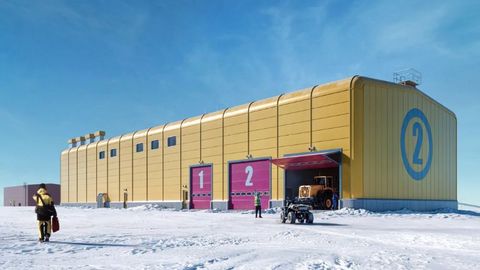Companies news
Bouygues Construction Australia and partners will modernise the Davis research station in Antarctica

Seven-year governmental project in Antarctica for Bouygues Construction Australia.
As part of an alliance that also includes the Australian Antarctic Division, Stantec and Mott McDonald, Bouygues Construction Australia has been chosen by the Australian government to modernise the Davis research station in Antarctica.
The Davis Research Station renewal will strengthen Australia's scientific research, presence and leadership in Antarctica. The project, with a Bouygues Construction share of AUD 150,5 million Bouygues Construction share, or €88 million), will start at the end of 2026 with delivery scheduled for 2032.
The modernisation of the Davis Research Station, built in the 1950s, will enable Australia to secure the expeditions of its scientific base, while reducing its environmental footprint. This reinforcement of Australia's long-term presence in Antarctica will strengthen and develop the important scientific research into the world's climate.
Undertaken by the Australian Antarctic Division (AAD) with an alliance including Bouygues Construction Australia, Stantec and Mott McDonald, this project to modernise Davis Station will include:
- Replacement of water production systems
- Construction of a new main powerhouse
- Development of a new vehicle workshop
- Refurbishment of the existing trades workshop
- Overhaul of site-wide services reticulation
- Decommissioning and removal of legacy infrastructure
These improvements will enable the Davis station to continue operating at full capacity, while improving employee safety and the efficiency of scientific missions in one of the most extreme environments on the planet.
Davis Station is Australia's southernmost Antarctic station. It is located near the Vestfold Hills, on the Ingrid Christensen Coast of Princess Elisabeth Land. The station is around 20 km from the edge of the continental pack ice.
The Alliance brings together world-class construction contractors, design consultants and the AAD to collaboratively deliver this complex and remote infrastructure program. Drawing on global experience delivering infrastructure projects in challenging environments with extreme weather and logistic conditions, Bouygues Construction Australia is leading the construction of each AIRP (Antarctic Infrastructure Renewal Program) component.
There are significant logistical challenges working in the harsh Antarctic environment. Davis Station experiences very strong winds, with gusts of over 200 km/h and the average winter temperature sits at around -21°C, sometimes plummeting to -42°C.
For this reason, the construction season is limited to the warmer months of October through to February, with no extensions possible. It is the only Australian station without a natural freshwater source, relying on reverse osmosis and shipped water, which limits supply during winter and caps population numbers.
The project has a focus on employing local specialists based in Tasmania who will be selected between the Alliance members with qualified workers travelling to Antarctica each season.
The entire project will be subject to stringent environmental approvals, in accordance with the Antarctic Treaty (Environment Protection) Act 1980 and the EPBC (Environment Protection and Biodiversity Conservation) Act.
Pascal Minault, Chair and CEO of Bouygues Construction, said:
"We are very honoured [to] have been chosen by the Australian Antarctic Division. This project represents an extraordinary technical challenge for our teams, who will bring all their engineering expertise and innovative spirit to bear. Building for life also means contributing to scientific research in the polar regions to better understand climate change in our world.”
Bouygues Construction has a strong expertise in delivering projects in extreme climatic or logistical environments (Iqaluit Airport in Canada, Olkiluoto EPR power plant in Finland) and in projects for science and research (Cambridge Physics Laboratory, Laser Megajoule near Bordeaux in France, Synchrotron in Grenoble, France, and a lot of laboratories for Research).
Source: Bouygues Construction Australia


